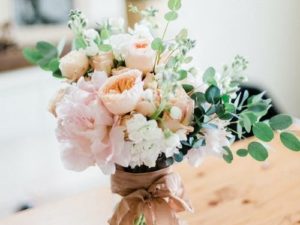Introduction to English Delftware
In the annals of ceramic art, English Delftware holds a place of distinction. Emerging in the early 17th century, this tin-glazed earthenware became a canvas for the expression of artistic elegance and cultural narratives. Rooted in the London area around 1610, English Delftware reflects a unique blend of local craftsmanship and European influences.
The Essence of English Delftware: Tin-Glazed Earthenware
At the heart of English Delftware lies its primary material – tin-glazed earthenware. This technique, involving the application of a tin-based white glaze over a clay body, allowed for a vibrant display of colors and intricate designs, setting the stage for a new era in pottery.
Historical and Geographical Context: London Area, 1610
The journey of English Delftware began in London around 1610. This period marked the transformation of the city into a hub for innovative pottery, driven by the burgeoning demand for decorative and functional earthenware. The London workshops became synonymous with quality and creativity, influencing the course of ceramic art in England.
Showcase of Artistry: Pair of Shoes, England, 1705-1715
A testament to the diversity of English Delftware is the ‘Pair of Shoes’ from London, dating back to 1705-1715. These pieces exemplify the detailed craftsmanship and whimsical design characteristic of the period, offering a glimpse into the everyday life and fashion of the era.
Variety in Form: Hound’s Head Stirrup Cup, England, c. 1770s
The Hound’s Head Stirrup Cup, crafted in England in the 1770s, illustrates the versatility of English Delftware. Used in hunting rituals, these cups showcase the fusion of functionality and artistic expression, with their realistic animal forms and detailed painting.
European Connections: Charger, France, Rouen, Late 17th Century
The influence of European pottery on English Delftware is evident in pieces like the Charger from Rouen, France. Dating back to the late 17th century, this earthenware reflects the shared artistic trends across Europe and the exchange of ideas that enriched the craft.
Influence and Inspiration: Dish with Scenes of the Abduction of Europa, Italy, Faenza, c.1537
The Dish with Scenes of the Abduction of Europa, originating from Faenza, Italy, around 1537, is a fine example of the broader European influence on English Delftware. The intricate storytelling and detailed imagery on this dish inspired English potters to explore narrative scenes in their work.
Regional Diversity: Bird Dish, England, Possibly Staffordshire, c.1690-1710
Highlighting the regional diversity within English Delftware, the Bird Dish, possibly from Staffordshire and dating between 1690-1710, showcases the local variations in style and motif. These pieces often featured bold, folk-inspired designs, distinct from their London counterparts.
Notable Craftsmen: Thomas Toft (d.1689)
The legacy of English Delftware is also the story of its craftsmen, like the renowned potter Thomas Toft. Active in the late 17th century, Toft’s work is characterized by its intricate decoration and complex designs, making him a pivotal figure in the history of English pottery.
Broader European Context: Sculpture of a Stove, Switzerland, Winterthur, c.1650
The Sculpture of a Stove from Winterthur, Switzerland, around 1650, serves as a reminder of the broader European context of Delftware. These pieces reflect the shared artistic heritage and the interconnected nature of European ceramic art during this period.
Conclusion
English Delftware, with its rich history, diverse forms, and exquisite craftsmanship, stands as a testament to the creative spirit of its era. From the bustling workshops of London to the influence of European artistry, it represents a confluence of ideas, styles, and traditions, woven into the fabric of ceramic history. As we appreciate these pieces today, they not only delight the eye but also tell the stories of the past, of the people who made them, and the times they lived in.



